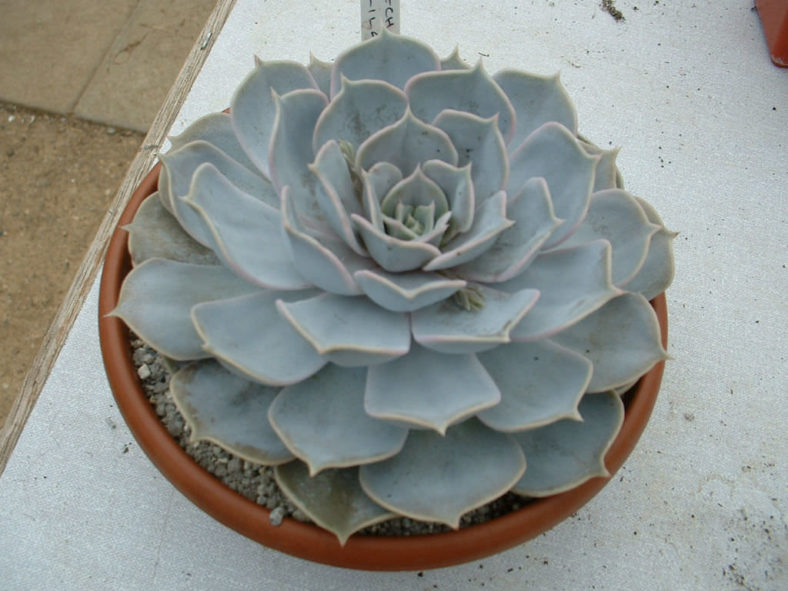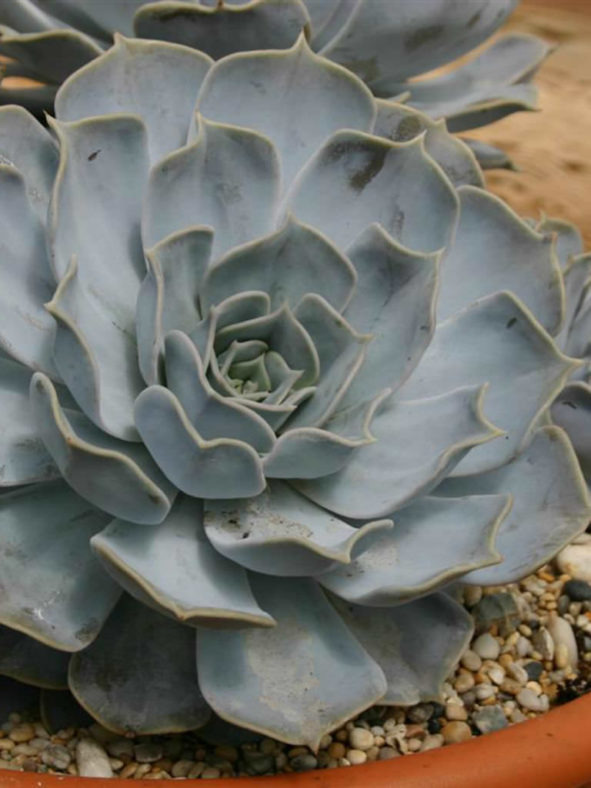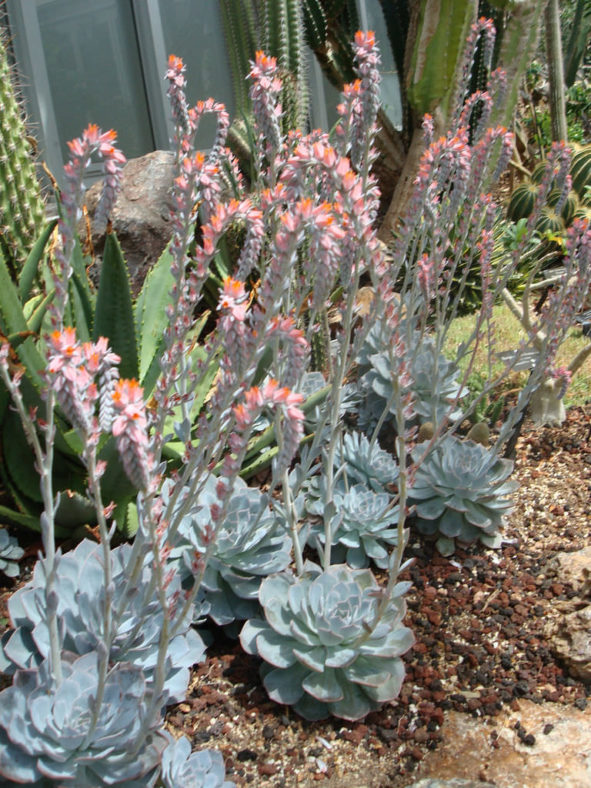Scientific Name
Echeveria lilacina Kimnach & Moran
Common Name(s)
Ghost Echeveria, Mexican Hens and Chicks
Scientific Classification
Family: Crassulaceae
Subfamily: Sempervivoideae
Tribe: Sedeae
Genus: Echeveria
Description
Echeveria lilacina is an attractive slow-growing succulent with fleshy silvery-grey leaves arranged in a dense short-stemmed rosette. The rosette grows 6.8 inches (17 cm) in diameter. Leaves are spoon-shaped, up to 3.2 inches (8 cm) long, and up to 1.5 inches (3.7 cm) wide.
The flowers are pale pink or coral-pink and appear in short, arching racemes on the top of reddish, up to 6 inches (15 cm) long stems. The flowering period extends from late winter to early spring.

Hardiness
USDA hardiness zones 9b to 11b: from 25 °F (−3.9 °C) to 50 °F (+10 °C).
How to Grow and Care
Most common Echeveria species are not complicated succulents to grow, provided you follow a few basic rules. First, be careful never to let water sit in the rosette as it can cause rot or fungal diseases that will kill the plant. Additionally, remove dead leaves from the bottom of the plant as it grows. These dead leaves provide a haven for pests, and Echeverias are susceptible to mealy bugs. Finally, as with all succulents, careful watering habits and plenty of light will help ensure success.
Repot as needed, preferably during the warm season. To repot a succulent, ensure the soil is dry before repotting, then gently remove the pot. Knock away the old soil from the roots, removing any rotted or dead roots. Treat any cuts with a fungicide.
Most Echeverias can be easily propagated from leaf cuttings, although some are better from seeds or stem cuttings. To propagate a leaf cutting, place the individual leaf in potting soil for succulents and cover the dish until the new plant sprouts.
Learn more at How to Grow and Care for Echeveria.
Cultivars and Hybrids
- Echeveria 'Clarina'
- Echeveria 'Crispate Beauty'
- Echeveria 'Lilac Dream'
- Echeveria 'Lola'
- Echeveria 'Moondust'
- Echeveria 'Orion'
- Echeveria 'Paloma'
- ×Graptoveria 'Margaret Rose'
Origin
Echeveria lilacina is native to Nuevo Leon in northern Mexico.
Links
- Back to genus Echeveria
- Succupedia: Browse succulents by Scientific Name, Common Name, Genus, Family, USDA Hardiness Zone, Origin, or cacti by Genus
Photo Gallery
Click on a photo to see a larger version.


